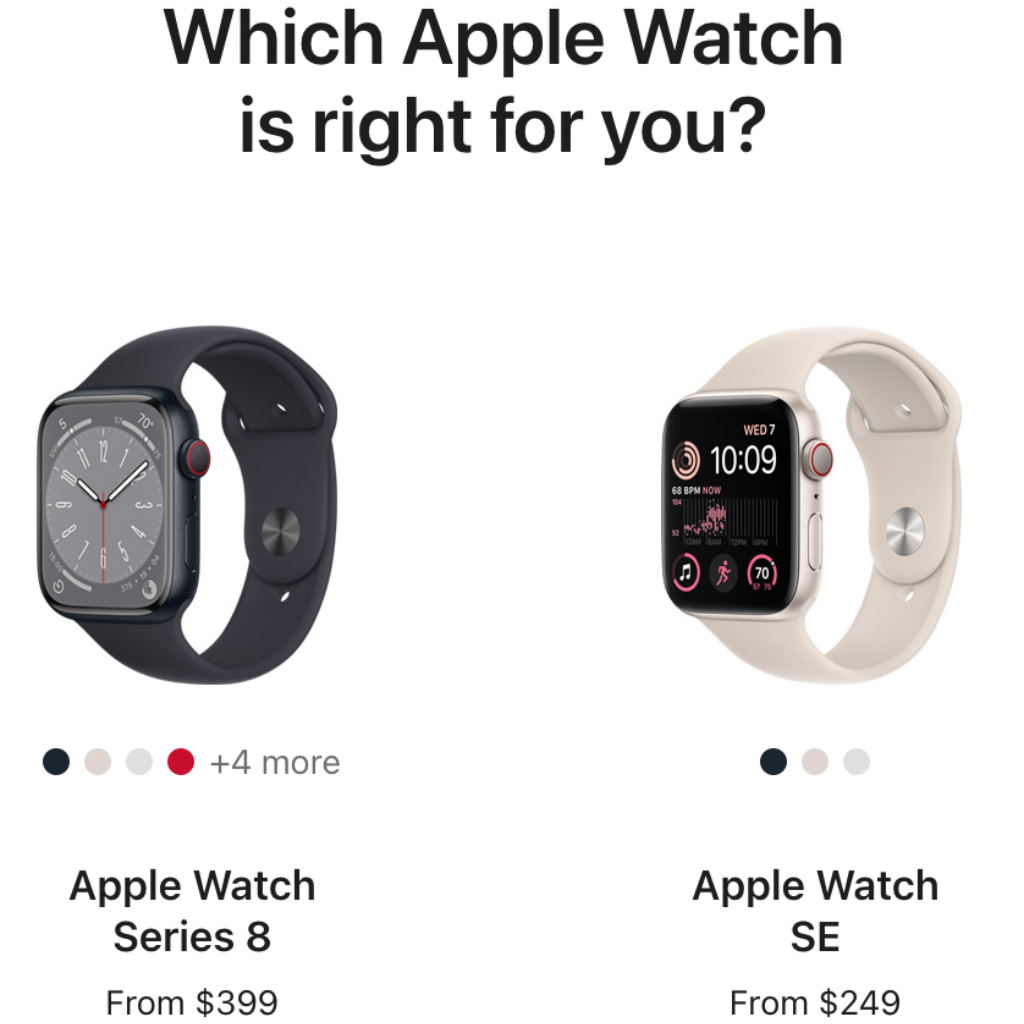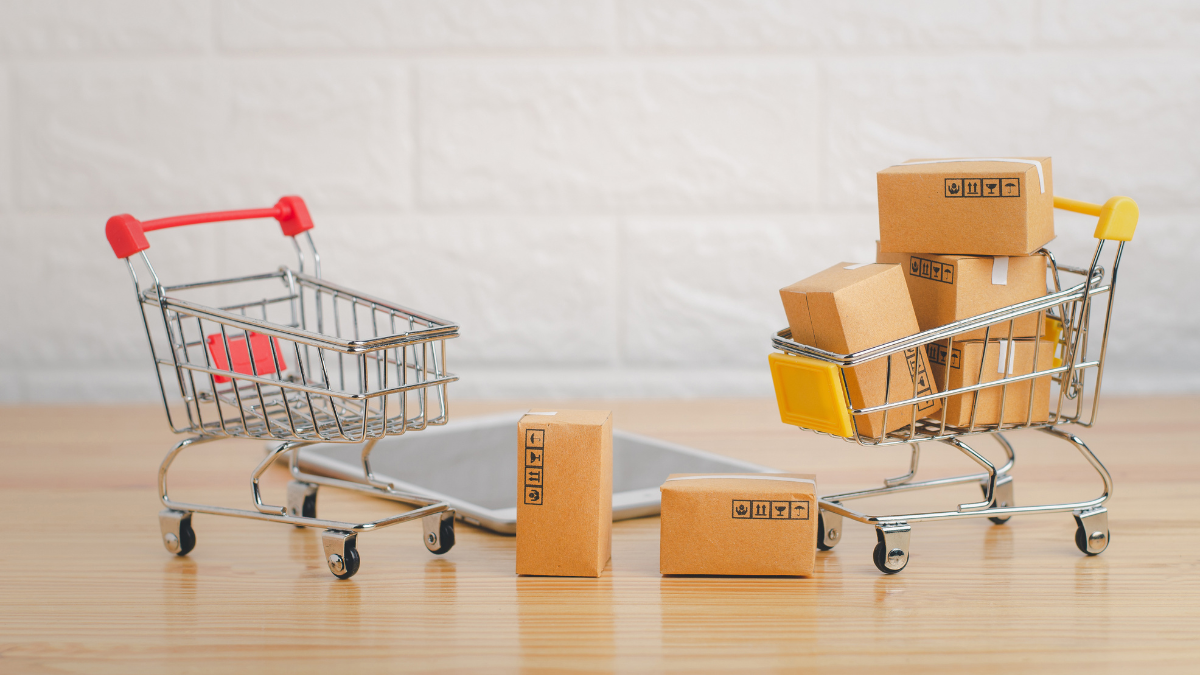When it comes to unlocking more sales, two proven techniques stand out: cross selling vs upselling. These powerful approaches have the potential to skyrocket your profits and customer engagement.
But, the question remains – which strategy should you embrace for your ecommerce business? Let’s get started.
The upside of upselling
Upselling is the art of enticing customers to consider a higher-priced version of the product they are interested in.
It’s not about pushing unnecessary expenses, but rather about showing compelling reasons why an upgrade is worth the extra investment.
By demonstrating the additional value and benefits of a premium offering, up-selling can lead to a win-win situation for both your customers and your business.
Imagine running an ecommerce store that sells smartwatches. A potential customer is eyeing a mid-range smartwatch model, and here’s where up-selling comes into play.
Showcase the premium model with additional features like longer battery life, health monitoring capabilities, and sleek design.
The customer who may be intrigued by the added benefits, might happily upgrade to the higher-priced option, therefor increasing the average order value and driving up your profits.

Strategies for upselling
Personalized recommendations: Utilize data analytics to understand customer preferences and behaviour. Recommend upgrades that align with their interests, making the up-selling experience more relevant.
Bundle deals: Offer bundled packages that combine the main product with complementary items at a slightly discounted price. This encourages customers to opt for the upgraded version while feeling like they’re getting a great deal.
Highlighting value: Clearly communicate the added value of the premium offering. Use persuasive product descriptions and eye-catching visuals to showcase the benefits of the upgrade.
The art of cross selling
Cross selling offers complementary products or accessories for customers to enrich their purchase.
By understanding their needs and suggesting valuable add-ons, you can create a shopping experience that leaves a lasting impression.
Consider a scenario where your ecommerce store specializes in cameras. A customer decides to purchase a DSLR camera from your website.
You can cross-sell here by presenting a carefully curated bundle that includes a camera bag, a tripod, and a memory card.
By offering these accessories as a package deal, you not only increase the purchase value but also provide the customer with a convenient and comprehensive photography solution.

Strategies for cross selling
Product page suggestions: Display relevant cross-selling suggestions on each product page. These could include “Frequently Bought Together” or “Customers Who Bought This Also Bought” sections.
Post-purchase recommendations: After a successful purchase, recommend complementary products that enhance the customer’s experience. Utilize automated emails or in-app notifications for this purpose.
Limited-time offers: Create a sense of urgency by offering time-limited cross-selling deals. Encourage customers to take advantage of the bundled offer before it expires.
Upselling vs Cross Selling
While both cross selling vs upselling have their advantages the decision ultimately comes down to your own ecommerce business and the preferences of your target audience.
Here are the factors to consider:
Product range
If your store has lots of products, cross-selling can be a great tool to introduce customers to complementary items they might not have considered.
Having a wide range of products gives your ecommerce store a competitive edge, but it also presents the challenge of guiding customers through their purchasing journey.
Cross-selling is particularly valuable in this scenario as it enables you to showcase products that complement the customer’s original choice, enhancing their overall shopping experience.
Customer experience
Cross-selling, when done right, can enhance the overall customer experience by providing convenience and value, thus fostering loyalty.
Customer experience is the cornerstone of success in ecommerce. Happy and satisfied customers are more likely to return to your store and recommend it to others.
Cross-selling can play a pivotal role in enhancing the customer experience by presenting them with valuable and relevant add-ons that improve their main purchase.
Premium offerings
If your ecommerce store features premium or luxury products, upselling can tap into customers’ desire for exclusivity and superior features.
For ecommerce businesses that specialize in high-end or luxury products, up-selling is a strategy that can significantly impact profitability.
Premium offerings often come with enhanced features, superior quality, and a sense of exclusivity that appeals to certain customer segments.
Customer data
In the data-driven age of ecommerce, customer data is an invaluable asset.
Analyzing customer behaviour, purchase history, and preferences can provide crucial insights into which strategy – up-selling or cross-selling – is more likely to resonate with your audience.

Cross Selling vs Upselling can work
Both strategies hold the potential to increase your store’s revenue, improve customer satisfaction, and solidify your market presence.
Embrace the art of upselling to elevate the value proposition of your products, Utilize the science of cross selling to offer thoughtful and relevant add-ons, enriching the shopping journey for your valued customers.
Remember, the key to success is understanding your customers’ needs, aligning your strategies with your product range, and delivering an exceptional shopping experience. By uitlizing the power of cross selling vs upselling, you can increase your customers average order value based on their needs.

